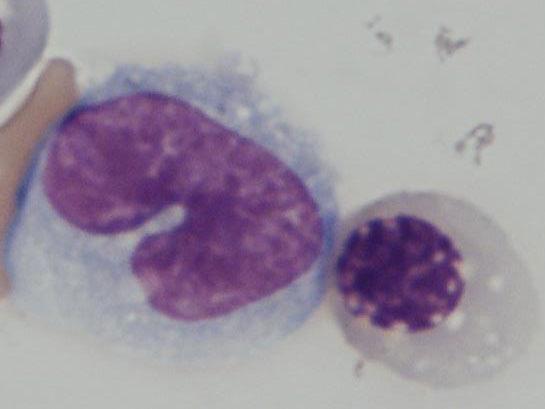Limitless blood supplies are 'tantalisingly close' to becoming reality, reveal scientists
Researchers turn adult cells into stem cells that can then create any kind of blood cell, including immune system ones

Your support helps us to tell the story
From reproductive rights to climate change to Big Tech, The Independent is on the ground when the story is developing. Whether it's investigating the financials of Elon Musk's pro-Trump PAC or producing our latest documentary, 'The A Word', which shines a light on the American women fighting for reproductive rights, we know how important it is to parse out the facts from the messaging.
At such a critical moment in US history, we need reporters on the ground. Your donation allows us to keep sending journalists to speak to both sides of the story.
The Independent is trusted by Americans across the entire political spectrum. And unlike many other quality news outlets, we choose not to lock Americans out of our reporting and analysis with paywalls. We believe quality journalism should be available to everyone, paid for by those who can afford it.
Your support makes all the difference.Scientists believe they are “tantalisingly close” to being able to make a “limitless supply” of blood to treat people with blood disorders and immune condition and help give transfusions.
For nearly 20 years, researchers have been trying to find a way to turn stem cells – which can create any kind of cell – into blood artificially.
Now a team of researchers has managed to create a mix of different types including blood stem cells that produced various different kinds of human blood cells when put into mice.
Dr Ryohichi Sugimura, a postdoctoral fellow at the Daley Lab in Boston Children’s Hospital in the US, said: “This step opens up an opportunity to take cells from patients with genetic blood disorders, use gene editing to correct their genetic defect and make functional blood cells.
“This also gives us the potential to have a limitless supply of blood stem cells and blood by taking cells from universal donors.
“This could potentially augment the blood supply for patients who need transfusions.”
And fellow researcher Dr George Daley, who heads the lab and is also the dean of Harvard Medical School, added: “We’re tantalisingly close to generating bona fide human blood stem cells in a dish.
“This work is the culmination of over 20 years of striving.
“We’re now able to model human blood function in so-called ‘humanized mice’. This is a major step forward for our ability to investigate genetic blood disease.”
A second team of researchers, led by Professor Shahin Fafii, of Cornell University, also managed to turn adult mouse cells into mouse blood stem cells.
And when mice whose immune system had been removed were given the blood stem cells, they regained immune blood cells.
If this could be reproduced in humans, it could provide a way of treating a range of immune disorders.
Both studies were described in separate papers in the leading journal Nature.
One potential problem with using stem cells in this way is the chance they could become cancerous.
Dr Caroline Guibentif, an expert at Cambridge University, who co-wrote a commentary in Nature about the two research papers, stressed that both represented a “a huge breakthrough”.
“People have been trying to do this for 20 years unsuccessfully,” she told The Independent.
“This is the first time … they have got cells that can self-renew and give rise to all sorts of blood cells, so of course it’s a big step towards the goal, but we are not quite there yet.”
She said both teams had turned ordinary cells into blood stem cells using genetic techniques.
One key property of stem cells is the ability to self-renew, to make copies of themselves.
But Dr Guibentif explained: “Self-renewal, this ability to proliferate is also a characteristic of tumours. You are introducing in a cell genes that induce the ability to proliferate."
Neither team found evidence of cancer being caused by the technique, but because mice are relatively short-lived compared to humans, there is a need to do more research to establish if this might become a problem at a later stage.
“When you use mice, they only live up to a year and a half or so. Humans develop cancer partly because they have a long lifespan. We are talking about different timescales,” Dr Guibentif said.
“Whatever works in a mouse, this is one of the reasons we need to double check it in a more thorough way.”
The technique used would also have to be made more efficient, she suggested, saying it would be “years, definitely” before it could be used to treat humans.
A spokesperson for NHS Blood and Transplant said: “This represents a significant advance in the field.
“It will, however be some time before this research leads to manufactured blood cells being used for patient treatment, volunteer donors remain a vital lifeblood for patients and will remain so for many years to come.”
The spokesperson said the researchers had used “a similar approach” to one being developed by Dr Cedric Ghevaert, of Cambridge University and NHS Blood and Transplant, “for the production of platelets from stem cells”.
Join our commenting forum
Join thought-provoking conversations, follow other Independent readers and see their replies
Comments